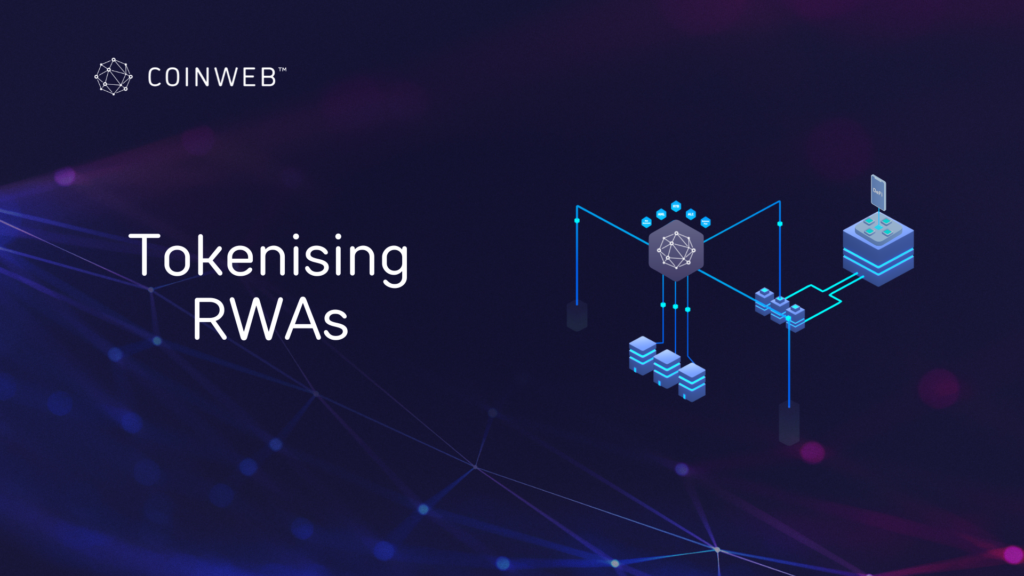
An introduction to tokenisation of RWAs on the Coinweb Protocol
Tokenising real estate assets is an efficient way to make one of the largest non-liquid markets more liquid. However, there are significant challenges to overcome before we can achieve the goal of tokenising RWA assets worth $16 trillion before 2023.
The technical readiness for this is uncertain as blockchains still face challenges such as poor UX, fluctuating transaction costs, scalability issues, and liquidity constraints. Additionally, the complexity of managing cross-chain transactions and the limited accessibility for non-crypto investors further complicate the process.
Coinweb’s Reactive Smart Contracts are central to the platform’s functionalities. These smart contracts can monitor and respond to events on any chain connected to Coinweb. For example, if you tokenize an RWA on one chain, and that chain experiences downtime, gas fee spikes, or catastrophic failure, the Reactive Smart Contracts will detect the issue and shift transactions to a more suitable chain. This feature can be set using programmable KPIs, effectively creating a Blockchain Routing System. This system not only provides immediate benefits but also future-proofs dApps by ensuring continuous operation regardless of individual chain issues.
To truly onboard Web2 retail investors, we need to improve the user experience. Imagine telling someone they need two credit cards to make a purchase—one for the product and one for transaction fees. This is how most blockchains work today, requiring users to hold a separate token for gas fees. Coinweb’s platform introduces Gas Fee Abstraction, eliminating the need for users to hold multiple tokens for transactions. This process is hidden from retail users, allowing them to transact with just the token they’ve acquired. A seamless transaction process like this makes tokenisation more attractive and accessible to a broader range of investors, including those outside the crypto space.
When we open up investments to so many people using blockchain as the underlying technology, we suddenly encounter another issue: which blockchain will be able to handle this workload? The answer is almost certain – not one in particular. So how do we solve this?
Since Coinweb doesn’t have its own blockchain or consensus mechanism, the limitation of maximum TPS (Transactions Per Second) isn’t dependent on Coinweb but on the chains it connects to. Compressing transactions at the L2 level makes Coinweb’s TPS on a chain up to 10 times higher than what the L1 can handle. It also makes gas fees considerably cheaper—up to 85% less, depending on the chain. Now, the real secret sauce here, and why we say that the Max TPS competition is over, is Coinweb’s ability to load balance traffic across all the chains it is connected to. This means that even if Coinweb’s Max TPS using Polygon is 12,000 and using BNB is 32,000, we can combine the TPS on all chains we are connected to determine Coinweb’s current Max TPS. The more chains we integrate and scale, the more TPS we get. All of a sudden, we have infinite scaling that allows us to tokenise real estate without having to worry about scalability issues.
We recognise that tokenisation is likely to occur on different blockchains rather than a single one. Therefore, we need to be able to facilitate payments from one blockchain for an asset on a different blockchain. With this in mind, interoperability becomes another challenge. The architecture of existing solutions isn’t secure enough; just look at the amount of funds stolen from existing bridges.
What is the general flaw in the architecture of these bridges? Typically, hackers attack the consensus/staked nodes as these are the easiest targets and single points of failure. Coinweb mitigates this risk by offering a consensus-free interoperability solution, so the only consensus utilised is that of the blockchains involved in the cross-chain swaps. This approach not only enhances security but also increases capital efficiency, as additional consensus mechanisms are costly to operate. With consensus-free interoperability, you can trade RWAs across different blockchains in the most secure and capital-efficient way, making liquidity an issue of the past.
There are also smaller, yet important aspects to consider. For example, if you have a token tied to the rental yield of a property, calculating and distributing these tokens can be a significant workload from an operational perspective. Using Coinweb’s Reactive Smart Contracts, you can automate this process. You can track how long a user has held a token, what yield is entitled, and automate the payment of rewards without any manual processes.
Coinweb also supports WebAssembly (WASM), enabling development in over 40 programming languages, including JavaScript, Python, C++, and Rust. This support broadens the developer base and makes it much easier for traditional enterprises to start developing blockchain-enabled applications.
As a general-purpose platform, the Coinweb Protocol enhances security, simplifies transactions, boosts scalability, ensures liquidity, automates processes, and expands development opportunities. Coinweb significantly improves the efficiency and attractiveness of tokenising real estate assets. With this technology, Coinweb, together with its RWA-related partners such as Libertum, EstateX and more, aims to unlock the possibility to tokenise assets worth $16 trillion by 2023.